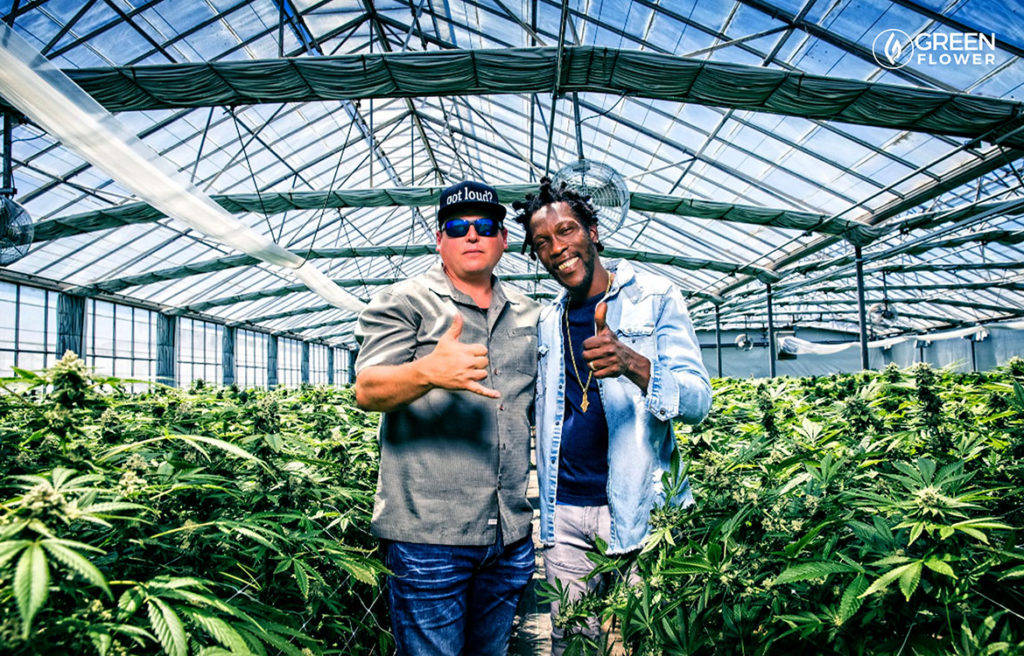Cultivating high-quality cannabis isn’t just about choosing the right growing mediums or having proper light — how a crop performs also comes down to its genetics. James Loud, Founder of Loud Seeds, is a decorated cannabis breeder and classically-trained chef with a self-proclaimed passion for the sacred plant. While Loud may not be dedicating much of his headspace to his mainstream trade, he certainly keeps his culinary prowess in mind when developing new and unique flavor profiles for future cannabis crops.
Loud, who has traveled the world consulting for cannabis grows of all sizes, is in high demand. His new YouTube program “The James Loud Show” is already making waves, and his first book, “Cannabis Breeding: Basic to Advanced Marijuana Propagation,” is set to be released in 2021. As the industry heads to standardization, Loud’s belief in stabilized genetics is gaining more traction than ever before.
Green Flower spoke with Loud from his California home where he discussed his first forays into cultivation, his breeding beliefs, and how landrace cultivars may be making a comeback.

Green Flower: What is your cannabis origin story?
James Loud: It’s almost been 30 years since I first started smoking. In the early ’90s, I started cultivating. My brother and I were growing in the back of our parents’ house; at night, when my parents would come home, we’d stash the plant in the neighbor’s yard. I had my learning curves with growing cannabis and got into home grows as I got older.
I started breeding in the 2000s with one of my partners. We started breeding mostly with Sour Diesel, but we were trying to create stuff that was new and original. The gas strains were starting to get more popular; Chemdog, Sour D, OG Kush. Those were all early ’90s varieties, but those were the exotics of the early 2000s and late ’90s.
In 2012, I won my first Cannabis Cup in Amsterdam. We were a real small company selling seed packs out of the back of my trunk to dispensaries in California, and then we started getting notoriety from High Times. We were featured in the magazine and were inducted into the High Times Hall of Fame in 2014.
GF: What are your unique approaches to breeding?
JL: It’s always been about making high-quality, stable varieties that taste good. Being a chef, I enjoy picking apart flavor profiles.
By stable, I mean less phenotypical variation, which I think is one thing that is confused in the industry. When cultivators think of stability, they think of hermaphrodism and what that actually refers to intersexual traits, which is something that can be bred in and out. It can be either reinforced or you can breed it out of plants.
To be stable, the process requires inbreeding. Inbreeding reduces the phenotypical variation. If you’re making feminized seeds, and you put one plant on itself, you’re eliminating some of the traits because both parents have the same alleles. If you keep on inbreeding cannabis varieties that already have low intersexual traits, you’re going to come up with something very stable within a handful of generations.
I’m currently working towards stable breeding lines. Stable breeding lines are great for consistency but, what farmers want is a vigorous plant that is less susceptible to disease and pests. Unfortunately, stable lines and hybrid vigor don’t go hand in hand. So, crossing two stable lines together gives you a superior advantage to what is being sold in today’s market as cannabis seeds. You get a true F1 which has heterosis (hybrid vigor) and also less phenotypical variation than the complex poly-hybrids being sold on the market today,
GF: How does the desire to stabilize genetics intersect with the ‘hype weed’ culture?
JL: The problem with the market right now is there’s such a high demand for the latest and greatest, by the time you make something you want to stabilize, it’s not popular anymore. I feel like the industry is going to go towards that stability down the road, especially when we’re talking about billion-dollar companies; they’re going to want stuff that’s stable when they put several acres out. It comes down to efficiency and it comes down to money at the end of the day, and you can control the quality a lot better when you can control the variables.
GF: What do you feel is the future of cannabis genetics?
JL: Besides utilizing genomics, I see the industry going back to the roots of some of the landrace varieties. A lot of people think of landrace as something indigenous that grows in the wild, but landrace is actually something regional that’s been cultivated by the people in that region and selected by people in that region for things, and a lot of those things are unique and a lot of times indigenous to that area. Some of them are hundreds of years old. I feel like people are going to start incorporating all these different cultivars from around the world. There’s so many we haven’t even seen in the U.S., and people are going to be making novel genetics out of these, potentially for drug discovery.
I one hundred percent agree that the sky’s the limit in the future. Anything will be possible if you can dream it, someone will be able to create it. I have no doubts the market will eventually stabilize as product and brand awareness improve and people like me will evolve or lose their demand. I think Autoflower varieties will play a big part in the future of large-scale outdoor cannabis cultivation. They are starting to become popular right now by farmers and they have huge advantages when scaling.

